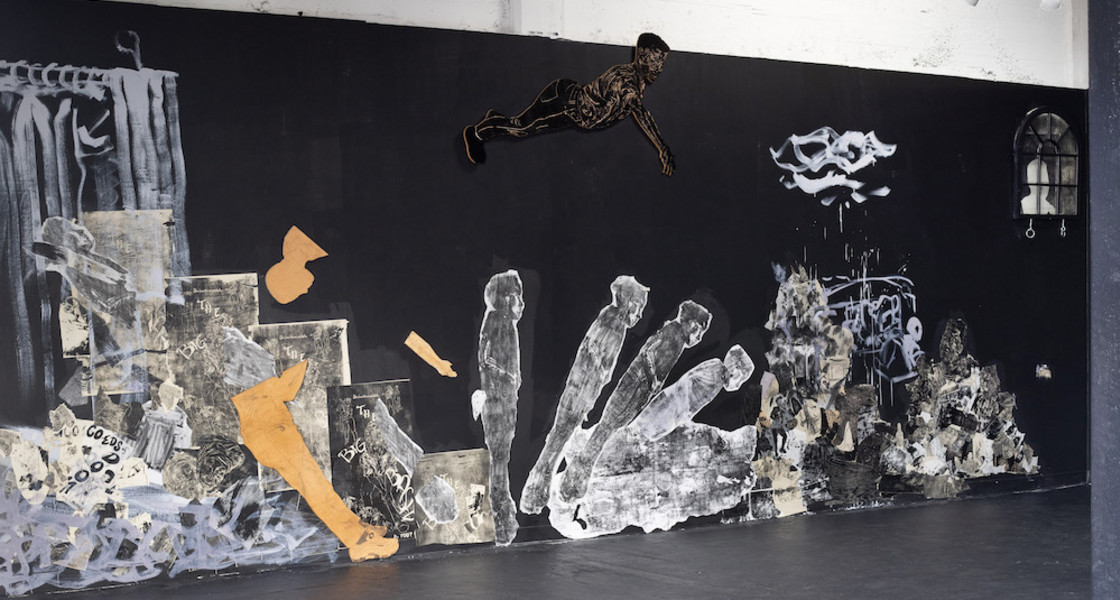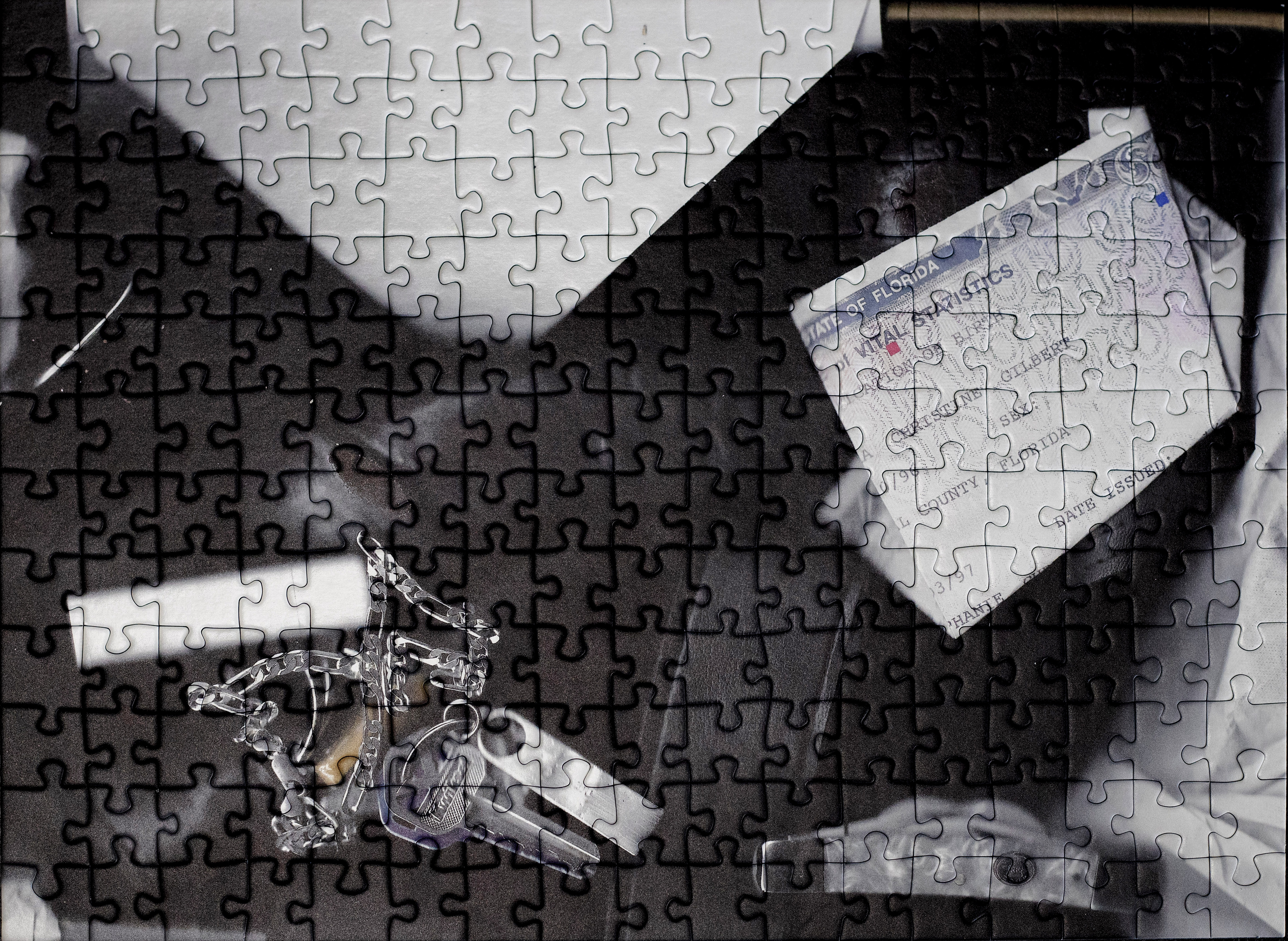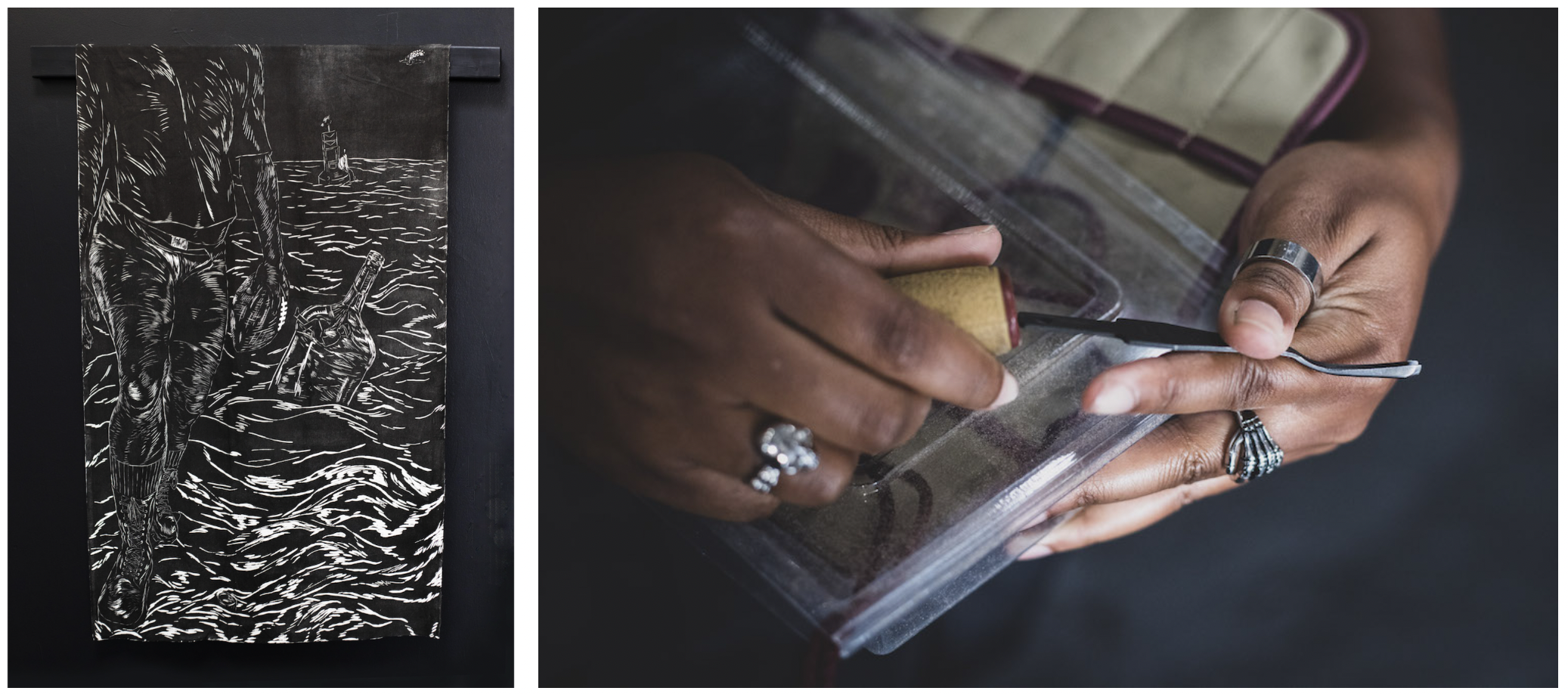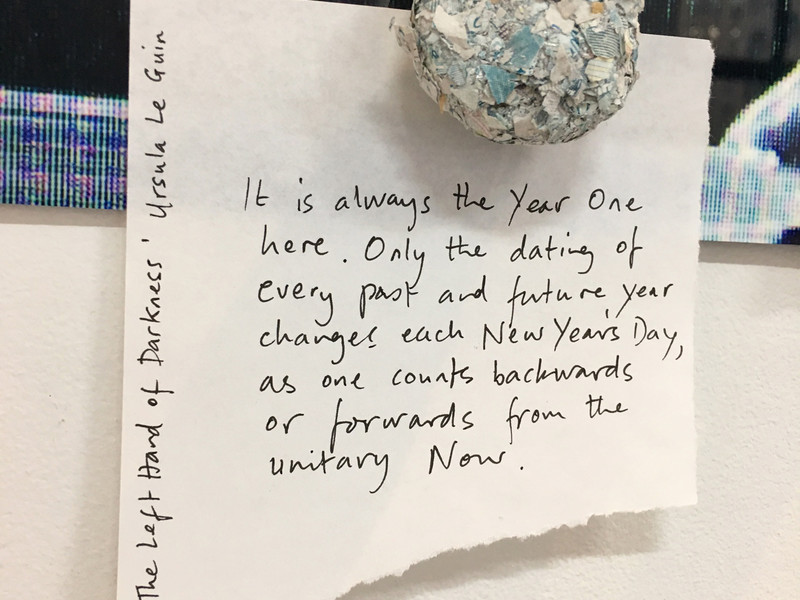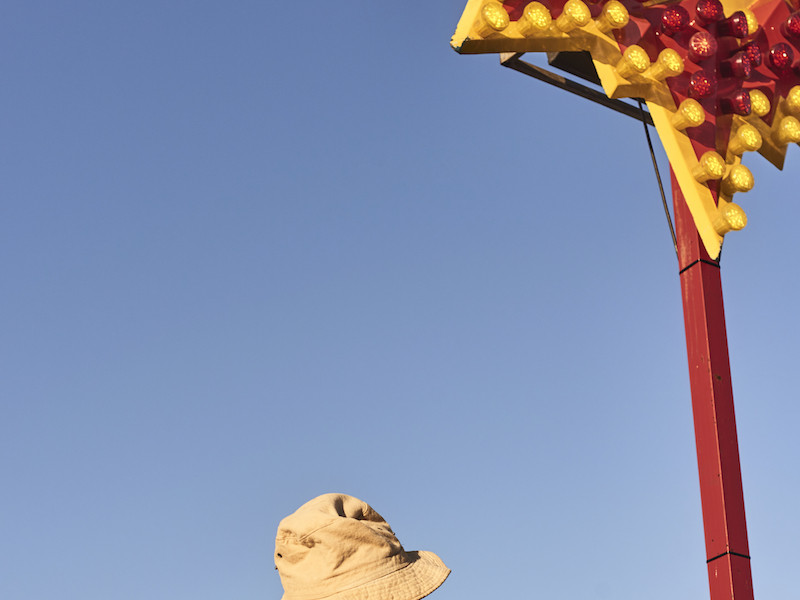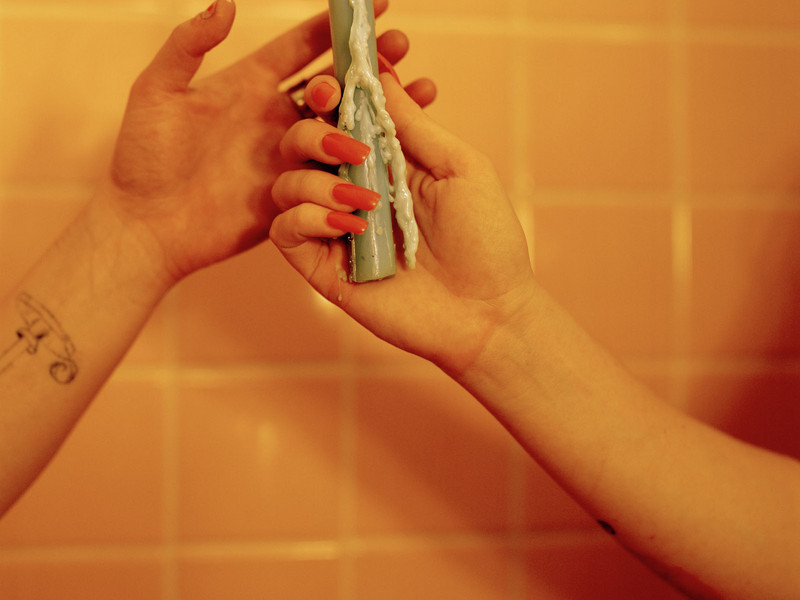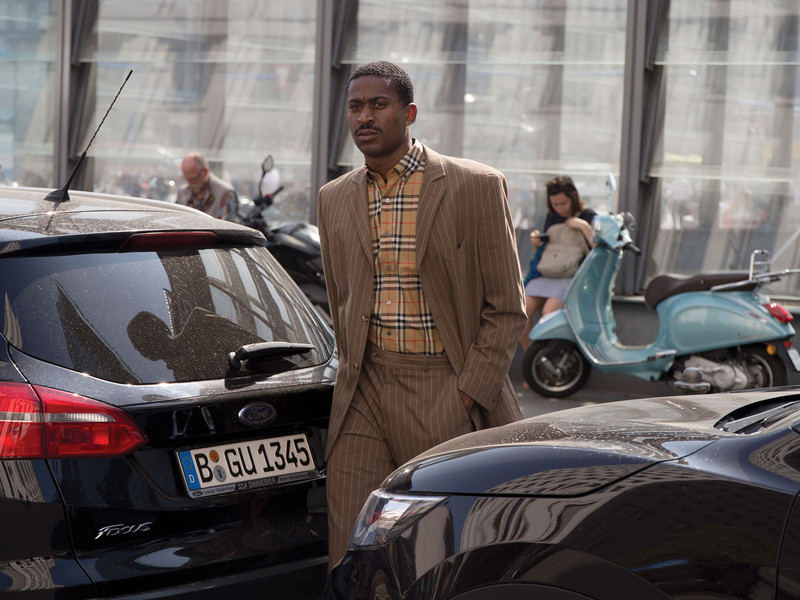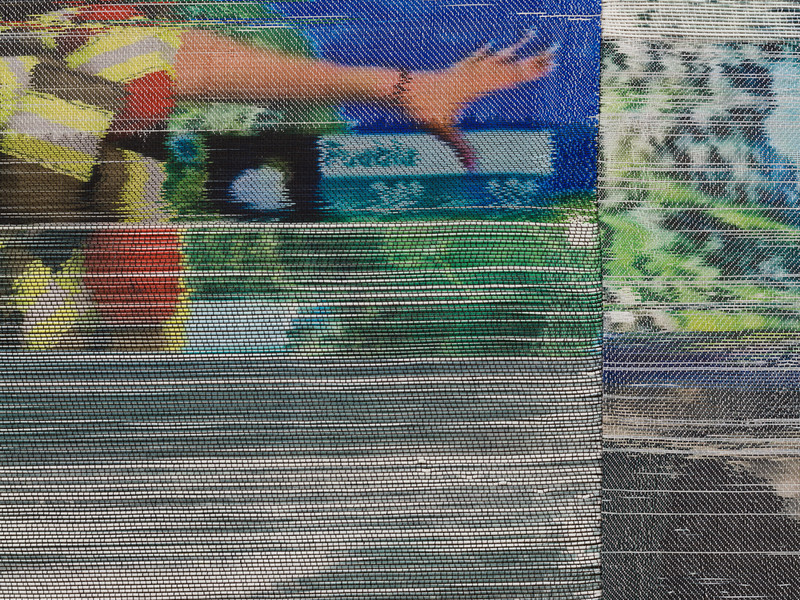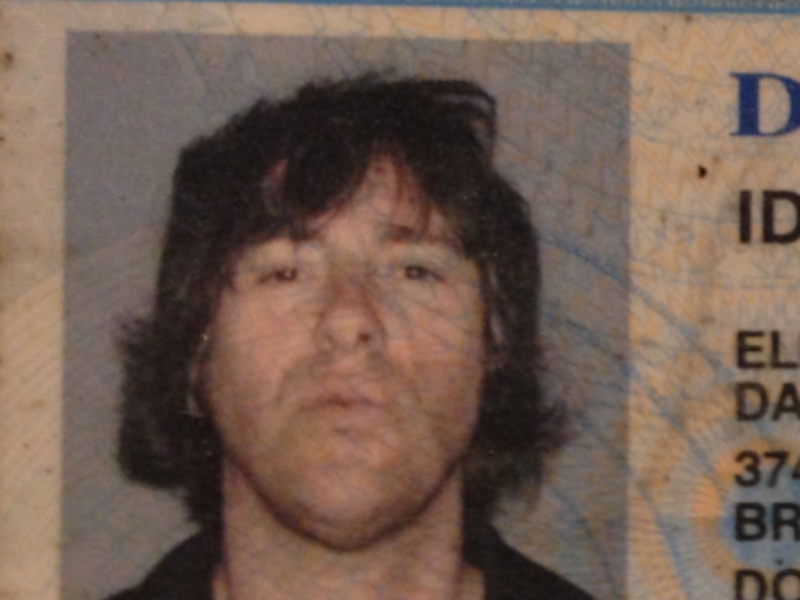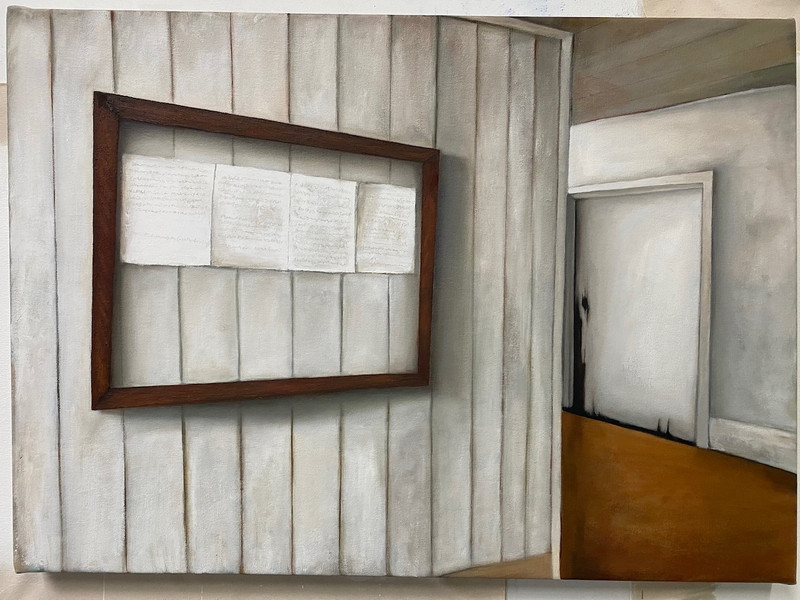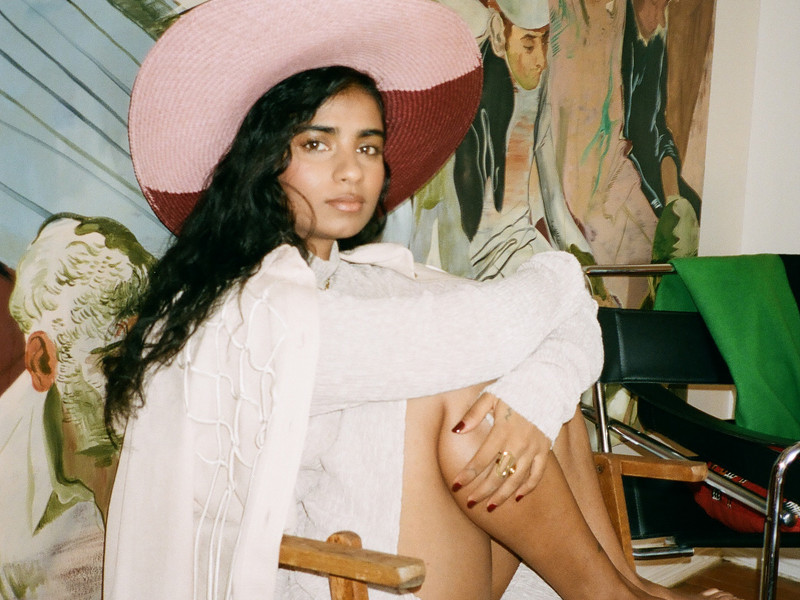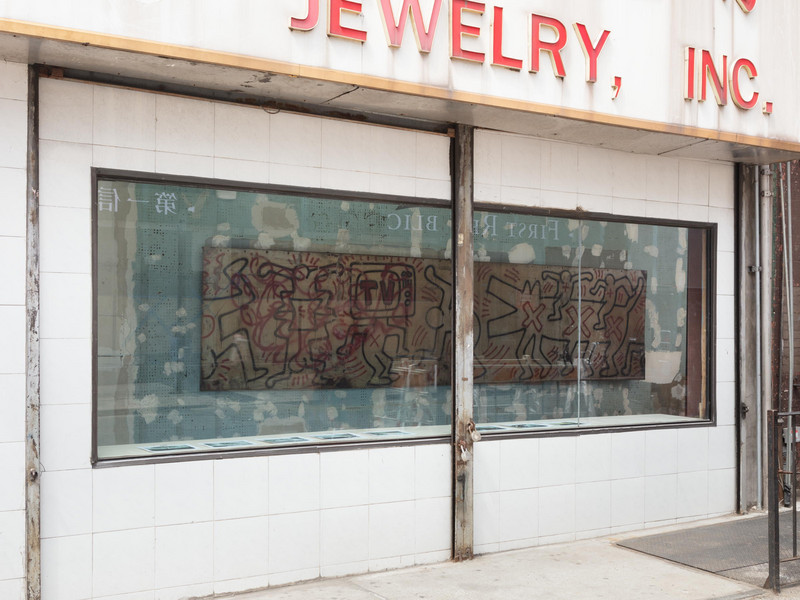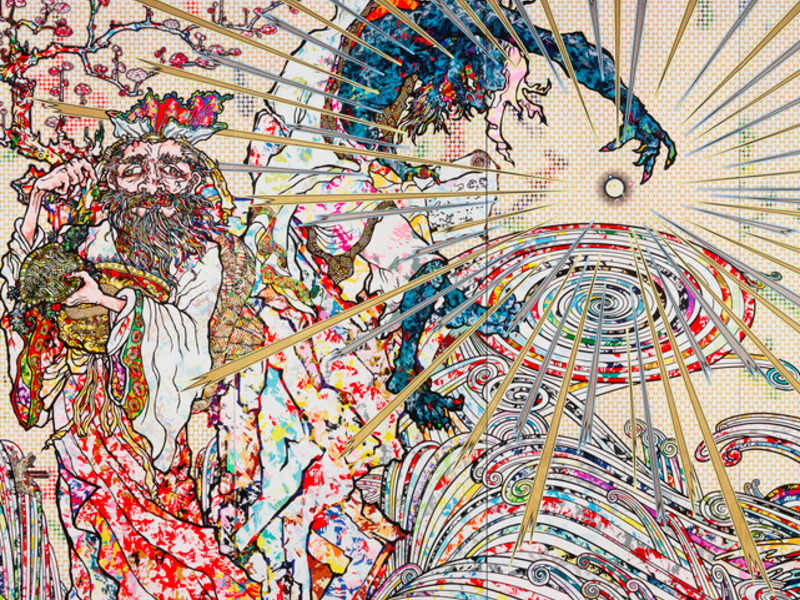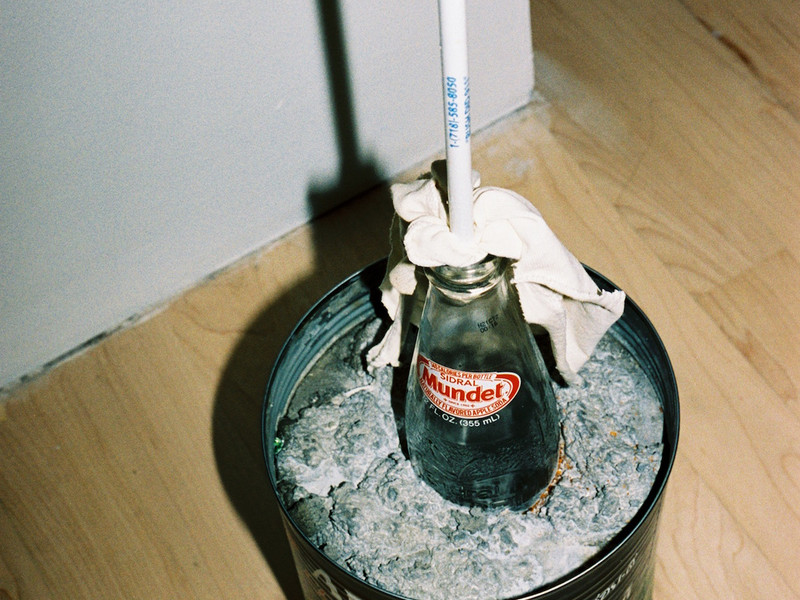On the Flesh of the Archive
Gilbert uses sculptural media, installations and kitchen lithography relief woodcut printing to reflect what it means to be remembered by the collective. The Jacksonville, FL born and Atlanta,GA based artist uses the fullness and sway of their subjects to make the palpable always in motion depicting ecstasy as an experience of spectrum instead of moral judgment. Gilbert’s partial exhibition is available to view at Kai Lin Art Gallery.
office sat down with the multi-medium artist to discuss reclaiming queer sexual histories, lesbian pulp fiction and blurring the lines of a critically fabulated queer life.
You do a very specific kind of printmaking, can you say more about the kind that you do and how it differs from more popular forms of the medium?
Yeah so, I predominantly do [woodcut] relief printmaking, which is basically when you just carve into a surface. But my specific medium is woodblock prints. Because initially when I was getting into it, wood could be found in the dumpster.
I also do screen printing and lithography, but lithography needs a lot of materials and access, so I do something called kitchen lithography, which is a more experimental process where I draw with an oil based crayon on tinfoil, and then etch it with vinegar or Coca Cola, and then you can print it with oil based ink.
With [woodcut] relief printmaking, it's basically like carving a stamp, and then you roll it up with ink, run it through a press, or in the case of the larger prints I make, you have to print it by hand.
I want to dig into your relationship with queer history and how its helped you build out this current exhibit?
For this body of work, the research for it started with me learning about the history of Lorraine Hansberry's queerness and reading about A'Lelia Walker, Madam C. J. Walker's lesbian daughter. Walker was known for throwing really lavish parties and orgies that kept the queer community of the Harlem Renaissance afloat. Walker's role in history gave me a lot of the inspiration about how parties are a point of exploration in my work because the spaces she made were a cultural touchstone in the community. I wanted to make an ode to the queer party in my own work because I was also learning a lot about the lack of lesbian bars in the US. I think there's only 35 of them left in the United States. As opposed to the six billion gay bars.
Understanding that throughout history, one of the ways we've survived as a people has been because someone was cool enough to let everybody hang out at their house was important to me. There is also this push and pull of every gay person you've ever known being at the same house party. Those spaces transform and are no longer a private space, but now an intimate public space. But it's still technically private from the outside world, but in terms of your social circle those parties are the front page of the news. Then you can have even more semi-private spaces in someone's bathroom or bedroom, of the party but the tension of that kind of existing is what I’m always trying to make real in my pieces.
I really was interested in this idea of private versus public for this collection specifically for some of these works. And then also... I was thinking alot about what gets left out of history, for folks like Pauli Murray and her relationship with Eleanor Roosevelt, that history is often not recorded properly or taken seriously and I really started to understand the need for historical speculation.
I had been reading Sadiyaa Hartman’s work while making this show, whose work on critical fabulation really impacted me. Haartman's concept is basically about taking history and reimagining the narrative to be something that's realistic but still living in the gray space between history and fiction.
I wanted to get into embodiment and how it plays a role in your work? With your last show in 2022 at Prelude Pointe Gallery, your primary piece, “Shouts Out to the Hot-Mouthed Women of Babylon", was centered around the kind of private and public queer intimacy that you’ve described through this new collection.
I think, learning about the historical queer movements, specifically that there have always been factions of like people that are more conservative about public discussions of sex.
Queer community in my experience is sexual, like that's another part of that publicness, it's like every party is a cruising spot, is the other thing, and then also sometimes a cruising spot is just a cruising spot.
And not shying away from the fact that a lot of our historians and record keepers are, like, members of the leather and BDSM communities because they have tight knit communities that look out for each other. I wanted to not shy away from that and just lean into the body a little bit more through history and narrative.
What is your archiving practice and how does it show up? Because it seems really clear in your work that memory is imperative to how you curate moments of transformation.
In terms of archiving, I try to or I should say I used to not be so good about this, but I'm trying to get good photos of all my work so that at least I can have more to look back on.
I look to artists, such as Felix Gonzalez Torres, who did a lot of insulations and inspired some of my work. Torres has this window seal exhibit installation “Untitled” (Loverboy) 1989, where the wind blows through the windows and curtains but it's constantly in motion.
Because his work is mostly installations, it only really lives in photographs now since his death so that honed in the importance of photography for my non-permanent work because some of them are site specific.
For my largest piece called, The Thin, Slick Membrane Between There And Here, I really was just trying to reach a critical mass of printed ephemeral. So, if you look in all these little things, there are faces and fabrics from various aspects of my life. There's a fabric thatI got from my ex, from a shirt that's made out of belts, that's actually my grandmother's shirt and a harness. For some of these prints I tried to screenprint the texture of spit to show its importance in BDSM culture. I haven’t done it yet but I have definitely tried to screenprint lube. All of that to say Torres’ work reminds me to always archive my work because it will live differently everywhere it goes.
What kinds of literary and film inspiration helped make this body of work come together?
Yeah, I read a lot of bad pulp fiction novels from the fifties and horror movies from the seventies and eighties. I've been reading a lot of Anne Bannon books, which are canonically lesbian pulp fiction. Mary Renault was actually my introduction into these terrible lesbian pulp novels. Like no one can be gay and survive. It's one of those kill your gays kind of series but I loved it.
I love the queer horror movies, specifically in my mural piece I have odes to Carrie (1976) and The Slumber Party Massacre (1982), and the cinematic idea of the angry lesbian that hates men and doesn’t get invited to the dance and takes it out on everyone. Outside of film and reading to just get this entire collection done I listened to a lot of podcasts such as Making Gay History and The Deviant’s War. I’m also an artist with ADHD so I normally keep a 154 BPM playlist going in my studio to keep me focused.
I wanted to ask about your piece, Make It Yours Again, because it is such a technical departure from the rest of the show. Yeah, how did that come about? And maybe just some context on how it came together?
So for Make It Yours Again, I was reading C. Reilly Sorton's book Black on Both Sides which I'm a huge fan of. It dives into trans history and the making of gender and pleasure in the public landscape. Originally I was going to build a pedestal for this sex chair and have stirrups coming out of it and footrests for like boot blacking and then a bowl at the bottom.
I wanted to talk about the differences of pain in the body and how it can transform into pleasure in the body in the use of the item and in my own construction of the device. I read The Black Body in Ecstasy by Jennifer Nash and I think a lot about that framework of life around shifting pain into pleasure and its context in BDSM spaces.
So that thinking was happening while I was building this pedestal but in the process of trying to make this machine, I got really frustrated because the wood warped, the material wasn’t good quality and all the iterations of how to install it fell through so I said fuck it and decided to deconstuct it. So now in the deconstruction the pieces are the body and the images surrounding it are the elements of my gender that have brought me pleasure and affirmation. Specifically this belt, this spoon for spanking, a note from a lover and bottle caps because beer has been a big part of my gender experience. All these images are prints that I made by hand. My goal was to think about how I’ve made myself and how I’ve alchemized the media perception of queer history to build my own internal world.
Can you give me a little bit of detail on these dichotomous pieces, The Most Wonderful Time Of The Year and The Most Wonderful Time Of The Year II?
Yes, Most Wonderful Time of the Year is a reference to how Halloween is basically gay Christmas. So these characters are at a Halloween party and this main character as you can see their reflection twice in the bottle, and through the libations of the shot glass this person is moving through their body to something higher. And then, you have the person facing away engaging and the person facing towards us who's looking out at the audience almost not fully engaging with the scene behind them and also focusing too much or being curious about what's, what else is out there.
And then you have the cowboy with no mouth who isn't capable of reaching that higher plane, but is still trying. Over here on the diptych or Pt. II, I want to show the morning after energy of the previous piece. The main figure in this second piece is now walking towards us, almost like getting out unscathed from the night before. And then you have the cowboy here who is maybe struggling but is still hanging on. And then you have the outlooker, the person who is not really engaging with queer community, and wants to focus on the outside world. I feel like vantage points of who's looking at who, whose body is turned to who reflects the politics of what each character deems important whether it be community or personal vanity.
